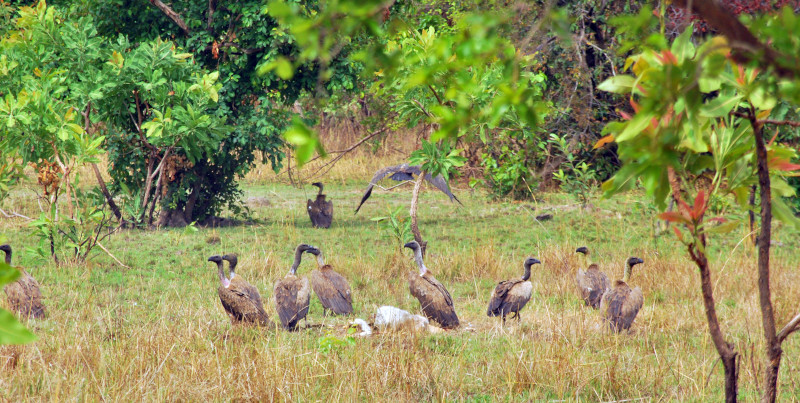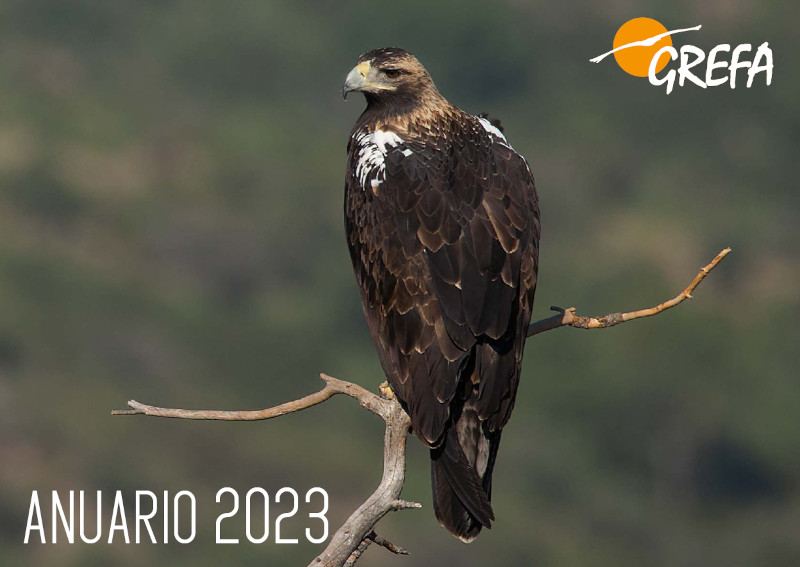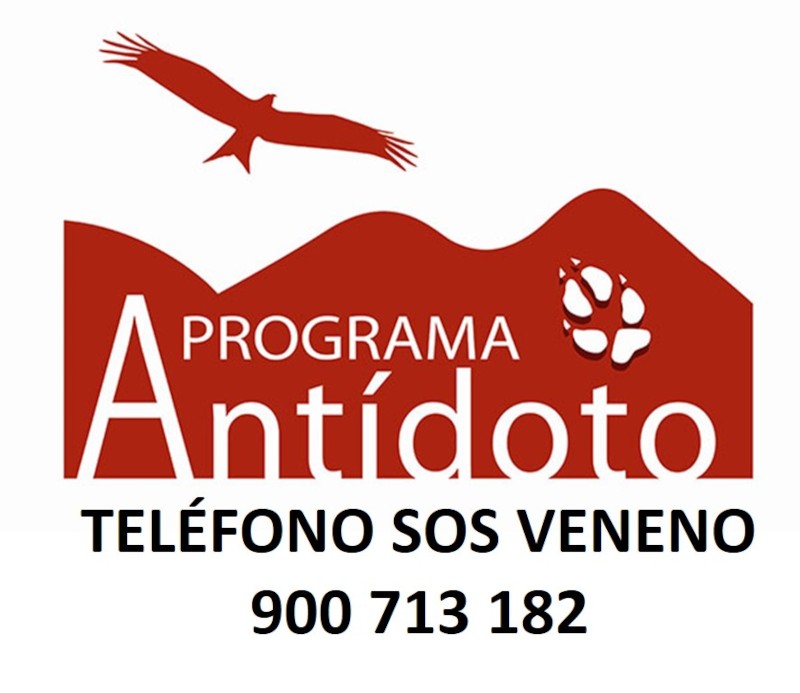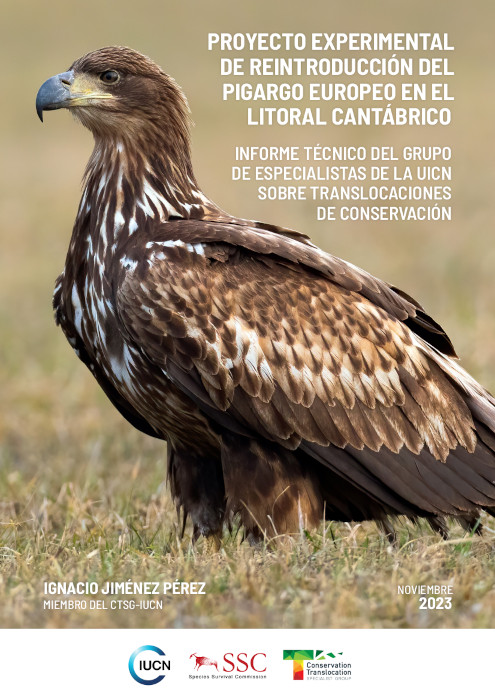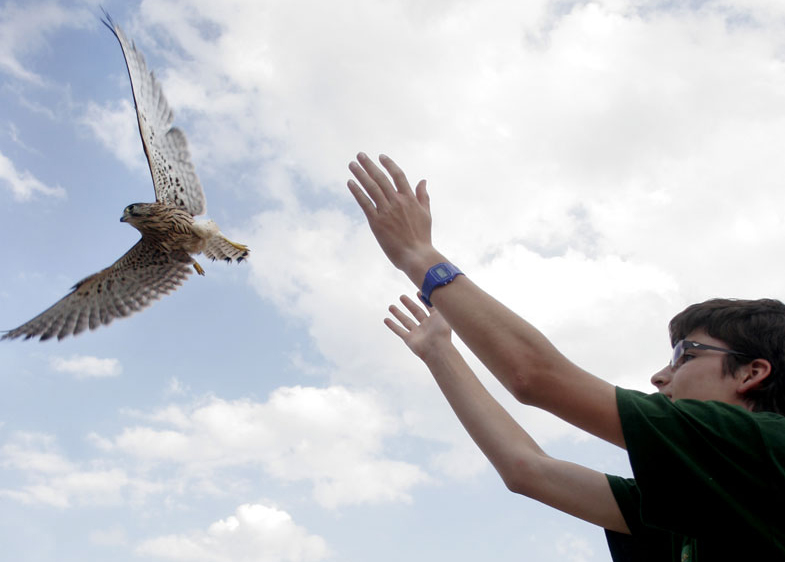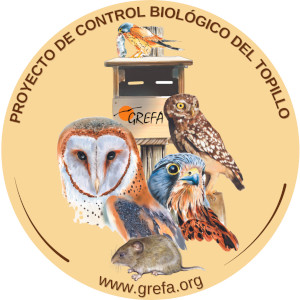Vultures are among the most endangered species in Africa, many on them at the brink of extinction. Not ignoring this problem, we are supporting a project of our collaborator Sandra Goded on the conservation of three of these species: the Hooded vulture, the White-backed Vulture and the White-headed Vulture. The project is being carried out in Mole National Park, in northern Ghana.
The main causes of the poor conservation status of African vultures are mainly the habitat destruction and the direct hunting for consumption or for their use in fetish markets for traditional beliefs, still widespread in West Africa. Knowledge of vulture abundance and breeding ecology is crucial for effective conservation measures, but in many African countries such data is lacking. Most vulture populations in West Africa have shown very steep declines in recent years, especially outside protected areas, with many species showing declines of more than 80%.
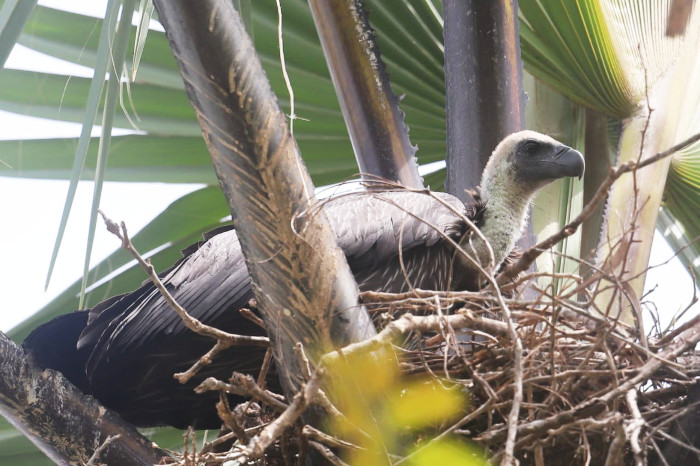 White-backed vulture chick nesting on a palm tree of the species Borassus akeassii in Mole National Park. Photo: Gregorzs Walzac.
White-backed vulture chick nesting on a palm tree of the species Borassus akeassii in Mole National Park. Photo: Gregorzs Walzac.
For more than five years, Sandra Goded, a former GREFA employee, has been working on a project for the conservation of African vultures in Ghana. In this project, she collaborates with Nathaniel Annorbah, lecturer at the University of Somanya (southeastern Ghana), to study abundance and protect nests of three species of African vultures that are listed as “Critically Endangered” in the IUCN Red List: the Hooded Vulture (Necrosyrtes monachus), the White-backed Vulture (Gyps africanus) and the White-headed Vulture (Trigonoceps occipitalis).
This work has being carried out in Mole National Park, Ghana's largest protected area, located in the north of the country and consisting of wooded savannah habitat. The park is home to the last relict of Ghana's vultures and some of the last populations in West Africa. The results of this work were published in April 2023 in the Journal of Raptor Research.
This publication explains that between 2019 and 2022 the highest counts of Hooded Vulture and White-backed Vulture exceeded seventy individuals for each species within the National Park, while the highest count of White-headed Vulture did not exceed seven individuals. Eighteen active nests of the three species were also documented: eleven belonging to White-backed vultures, six of Hooded vultures and one of White-headed vultures.
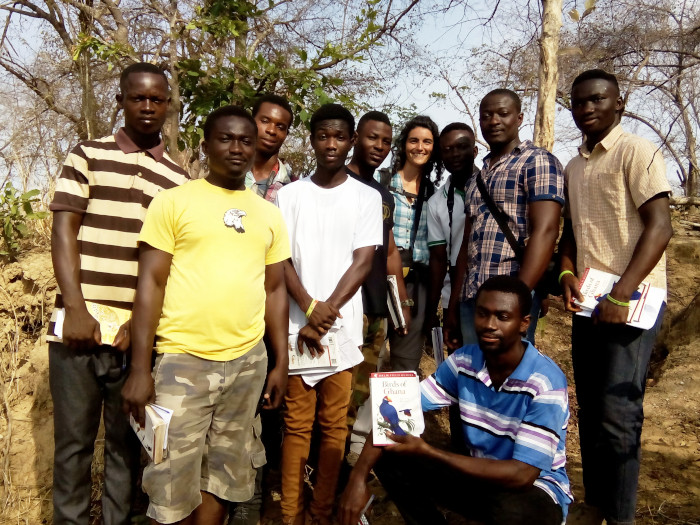 GREFA collaborator Sandra Goded during a field biology practical with Environmental Science students from the University for Development Studies on Tamale, Ghana. Photo: Obed Chonga.
GREFA collaborator Sandra Goded during a field biology practical with Environmental Science students from the University for Development Studies on Tamale, Ghana. Photo: Obed Chonga.
The nests of both Hooded and White-backed vultures were located in riparian forests, all in a single palm species, Borassus akeassii, which is the first time this nesting habitat has been documented in any African vulture species. The results of this work give great value to the role of Mole National Park in the conservation of African vultures, as it provides vital feeding and breeding habitat for populations of three critically endangered vulture species and numerous other wildlife species that have been extirpated elsewhere in West Africa.
Sandra Goded and Nathaniel Annorbah's project also includes a crucial part of environmental education on the importance of vultures and their ecological and health role as scavenger species. To this end, they carry out activities with children and adults in the local communities around the National Park aimed at avoiding direct hunting of vultures and encouraging local people to percieve these species as sources of collective pride and even funding through responsible ecotourism.
The most recent and necessary step for the conservation of these species and the knowledge of the breeeding and feeding ecology was the tagging of a young Hooded Vulture carried out last year through the crucial collaboration of GREFA members, experts in vulture tagging.
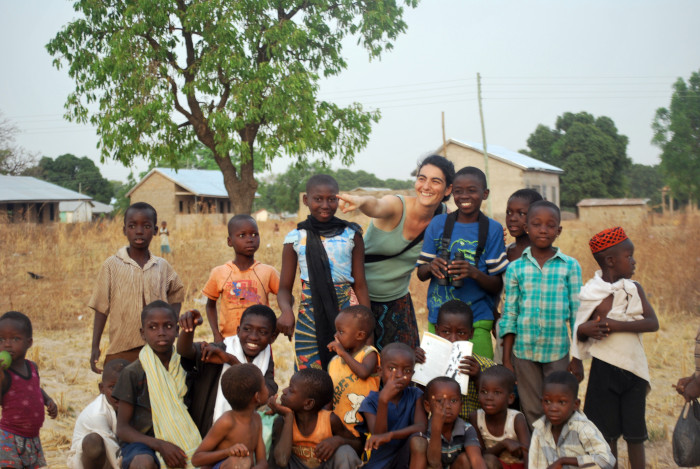 Sandra conducts an environmental education activity with children in Tamale, Ghana. Photo: Iddris Adam.
Sandra conducts an environmental education activity with children in Tamale, Ghana. Photo: Iddris Adam.
More information:
Sandra Goded and others authors (2023). Abundance and breeding ecology of critically endangered vultures in Mole National Park, Ghana. Journal of Raptor Research, 57 (4): 628-639.
Spanish version:



